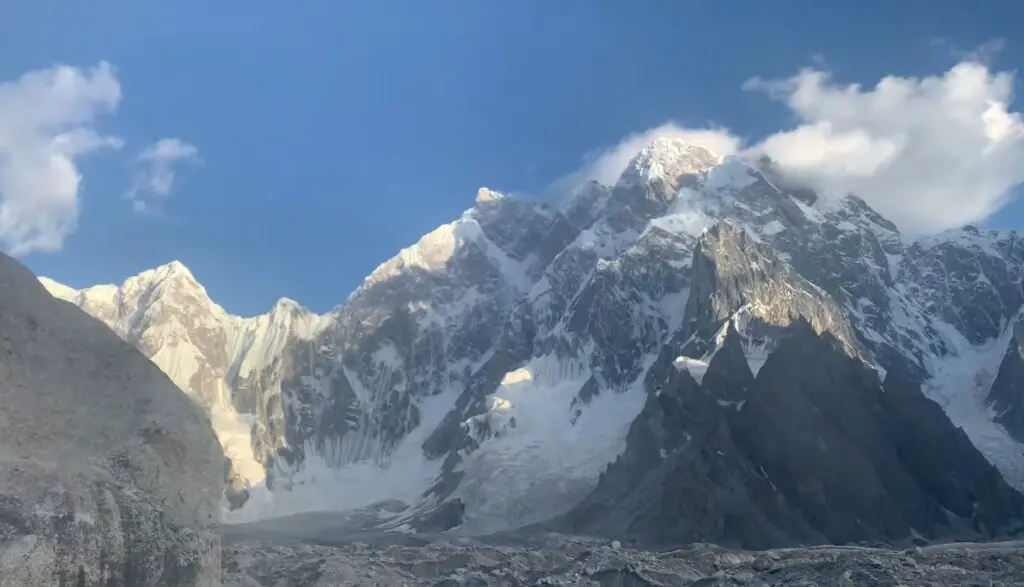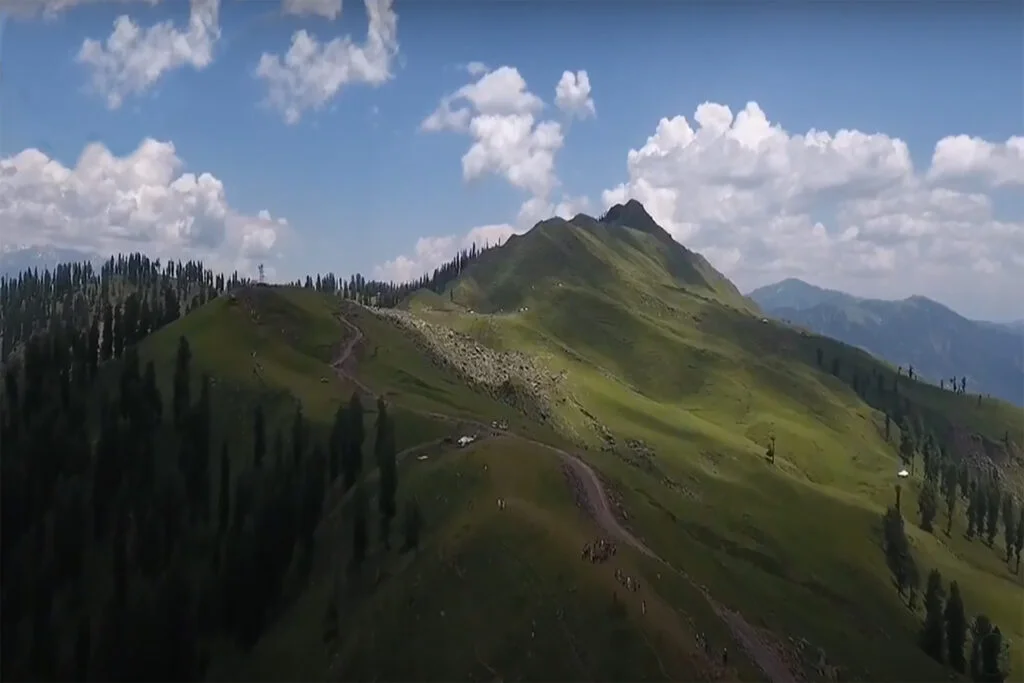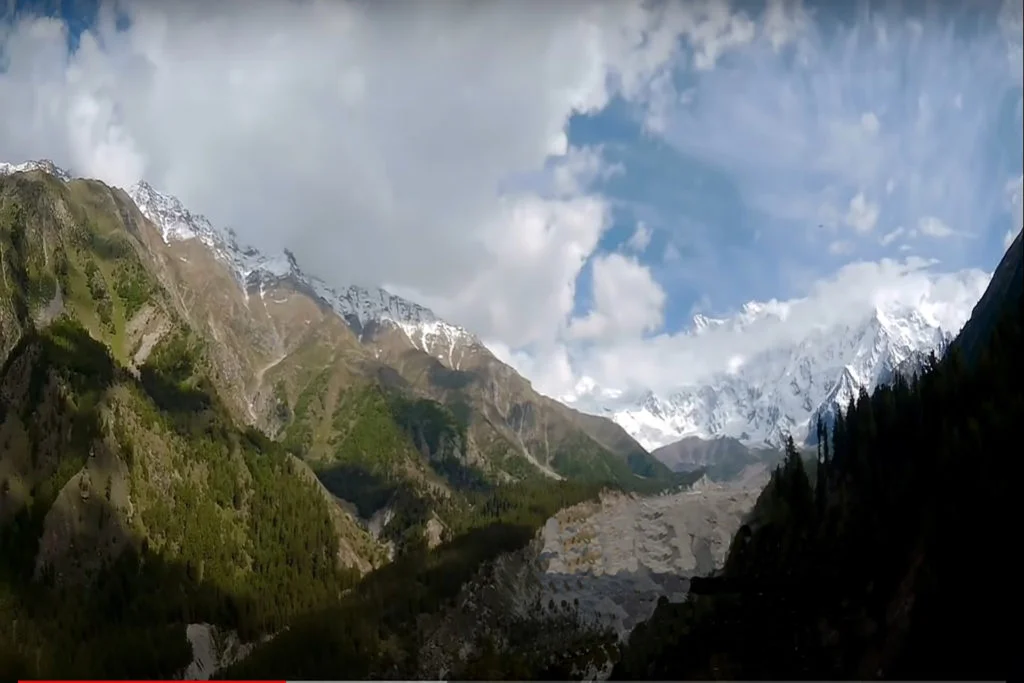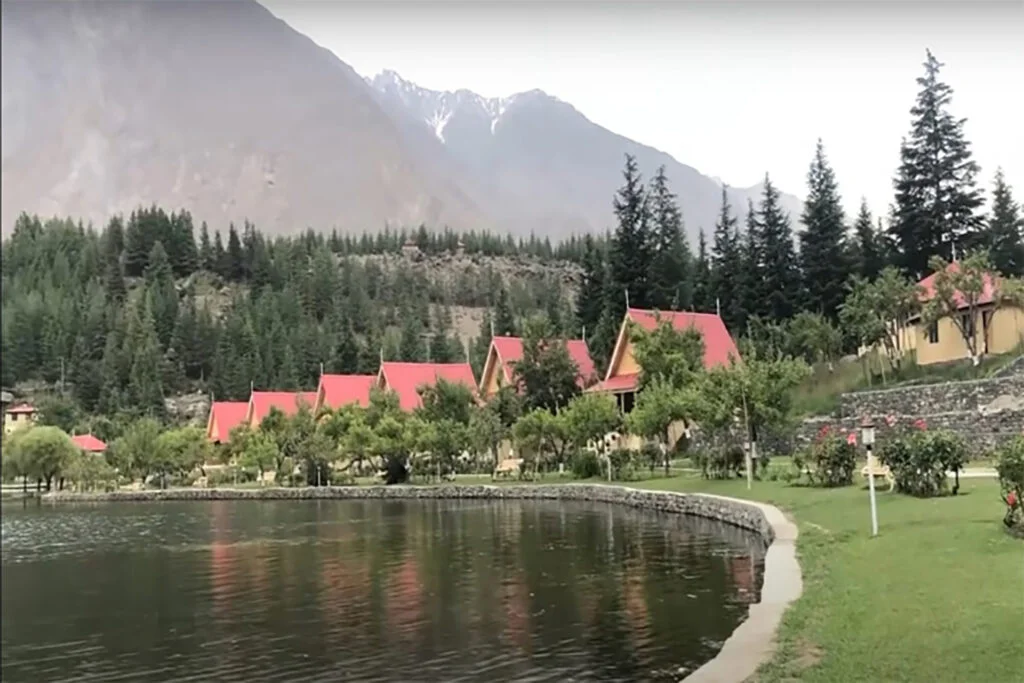K7 Peak, also known as K-Seven Peak, is a mountain located in the Karakoram Range of Pakistan. It is one of the highest peaks in the world, with an elevation of 6,934 meters (22,747 feet). The mountain is located in the remote and rugged region of the Karakoram, which is known for its challenging and unforgiving terrain.
Location and Height of K7 Peak
K7 peak is located in the Saltoro and Masherbrum mountains. The nearby glaciers are Kaberi and Charakusa. A possible route to the summit is from Khapulo in Baltistan via Tagas, Dumsum, and Kaberi Glacier. Some maps show its height as 6,934 m, while others show it as 6,935 m.
K7 Peak Climbing History
The first ascent of K7 Peak was made in 1984 by a British expedition led by Alan Rouse. The team climbed the peak via the West Ridge, a difficult and technical route that requires advanced mountaineering skills. The climb took 14 days and required the use of fixed ropes and a number of difficult pitches.
Since the first ascent, K7 Peak has become a popular destination for climbers seeking a challenging and adventurous climb. The mountain is known for its steep and exposed routes, as well as its unpredictable weather and harsh conditions.
In recent years, K7 Peak has also become a destination for ski mountaineering. In 2011, a team of skiers and snowboarders made the first descent of the mountain’s East Face, a steep and technical route that required the use of ropes and other safety equipment.
It was in 1955 that members of the Harvard Mountaineering Club Karamoram Expedition explored the summit of K-7 with the goal of climbing it. In 1976, an eight-member strong expedition of the Fukuoka Climbing Club from Japan tried their hand at this peak.
However, this was not possible due to lack of time. In 1977, the Japan Asia University Karakoram Expedition led by Nabue Sakamoto attempted the summit from its west face via the Charakusa Glacier but was unsuccessful.
The party consisted of 12 members. His climbing leader was Hiroshi Ishkikawa. In 1982, another Japanese group called the Hosho Expedition, led by Masayuki Hoshina, attempted the summit again from the Charakusa Glacier. This six-man expedition could reach 6,096 m.
In 1984, the Australian expedition of Roddy Mackenzie, consisting of four people, again tried their luck at the summit but failed to climb it. In the same year, the expedition of Japan Skialpine Club T. Nagata, which consisted of eight people, also attempted to climb the summit.
Three of its members reached the summit on August 8. The next day, the leader and two other members also reached the summit. The group had already set up five camps and a base camp on the Charakusa Glacier.
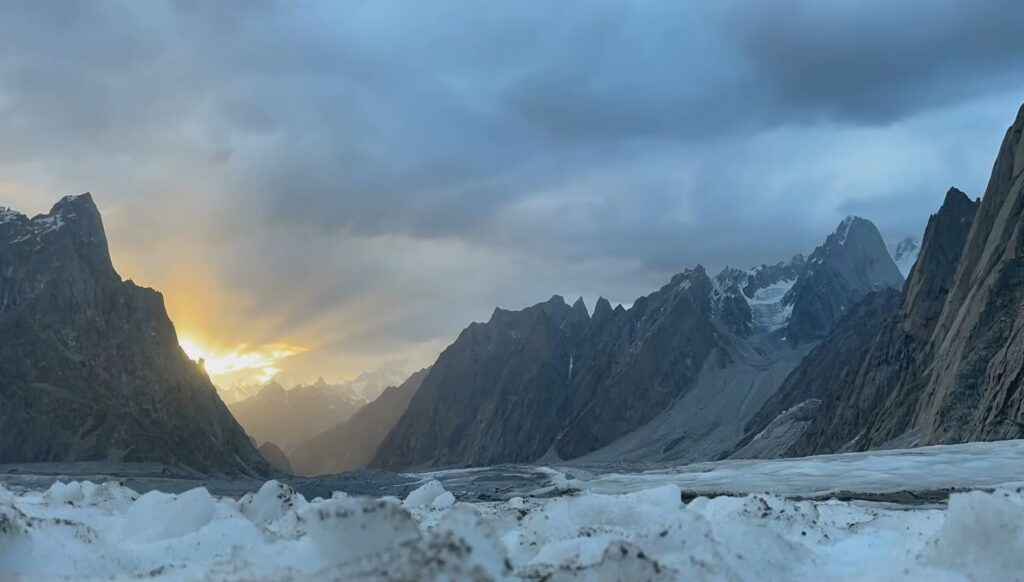
Features of K Seven Mountains
One of the notable features of K7 Peak is its unique shape, which resembles a steep pyramid with a narrow, rocky summit. The mountain is surrounded by several other peaks, including K6, K7 West, and K7 East, which together form a stunning backdrop for climbers and adventurers.
In addition to its challenging climbs and stunning beauty, K7 Peak is also an important site for scientific research. The region is home to a number of rare and endangered species, including the snow leopard, which is considered one of the most elusive and majestic animals in the world.
Scientists have conducted a number of studies in the region to better understand the ecology and behavior of these animals, as well as the impact of climate change on the fragile mountain ecosystem. The region is also an important source of water for the surrounding communities, which depend on glacial meltwater for irrigation and other purposes.
Rock & ICE Climbing at K7 Peak
K7 Peak (Charakusa Valley) offers great rock and ice climbing peaks and is very easy to access. This valley lies at the head of the Hushe valley. K7 valley (Charakhusa valley) is a small valley which is surrounded by jagged tower mountains like K6 (7281 m), K7 (6934 m), Mingling Sar (7041 m), Drifika (6650 m), Kapura peak (6545 m).
You can practice the most amazing alpine climbing in the area right on the spot.
Most peaks are less than 6,500 m high; the numerous peaks at this altitude therefore offer the best technical climbing conditions you will ever encounter.
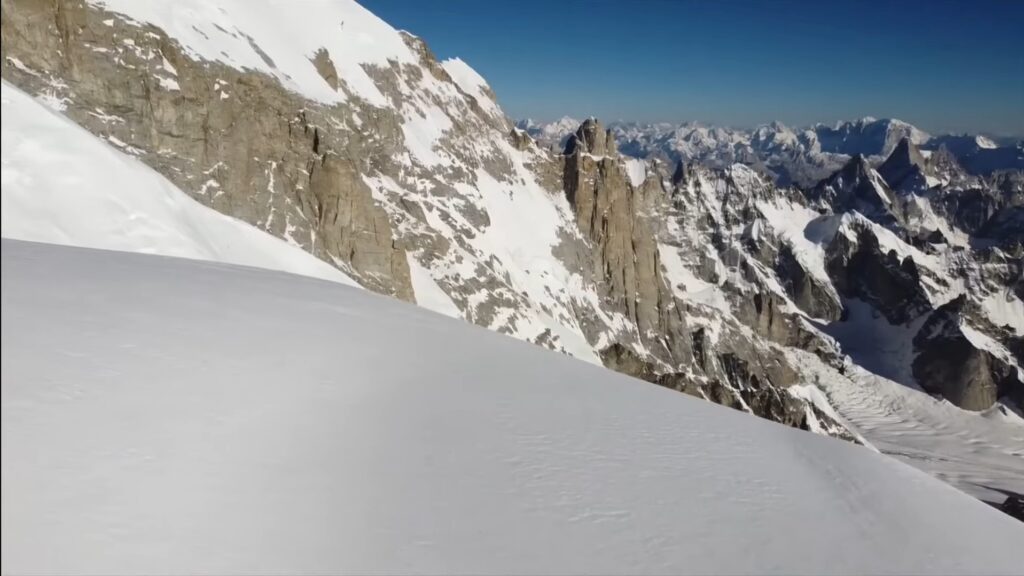
Despite its popularity among climbers and skiers, K7 Peak remains a remote and challenging mountain that requires careful planning and preparation. The region is prone to avalanches, rockfall, and other hazards, and climbers must be prepared to deal with high altitude, extreme weather, and difficult terrain.
Overall, K7 Peak is a symbol of the incredible beauty and challenge of the Karakoram Range and a testament to the skill and perseverance of the mountaineers who have climbed it. Whether you are a seasoned climber or simply an admirer of the world’s great peaks, K7 Peak is a sight to behold and an inspiration to all who seek adventure and exploration in the world’s most remote and rugged places.
Despite its importance as a site for research and exploration, K7 Peak and the surrounding region face a number of challenges, including climate change, overgrazing, and other human activities that threaten the fragile ecosystem. Conservation groups and local communities are working to protect the region and ensure its long-term sustainability, but much work remains to be done to ensure the future of this unique and important landscape.
In conclusion, K7 Peak is a symbol of the incredible beauty and challenge of the Karakoram Range and a testament to the skill and perseverance of the mountaineers and adventurers who have explored its rugged slopes. Whether you are a climber, skier, scientist, or simply an admirer of the world’s great peaks, K7 Peak is a source of inspiration and wonder and a reminder of the power and majesty of the natural world.

